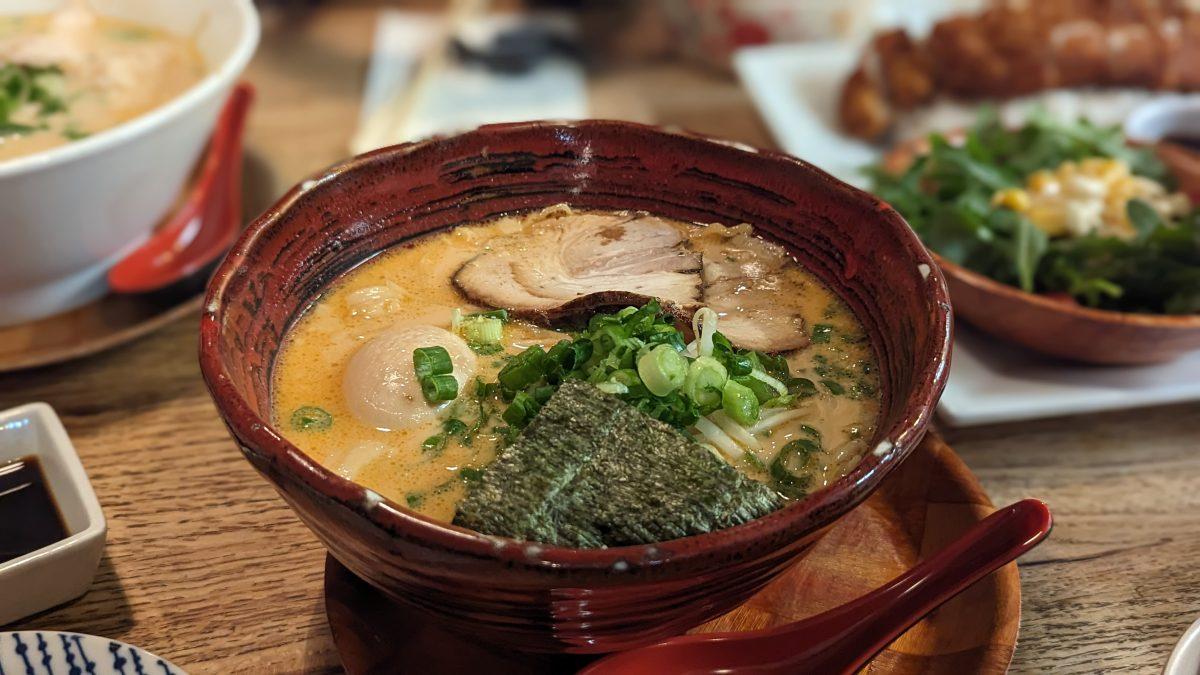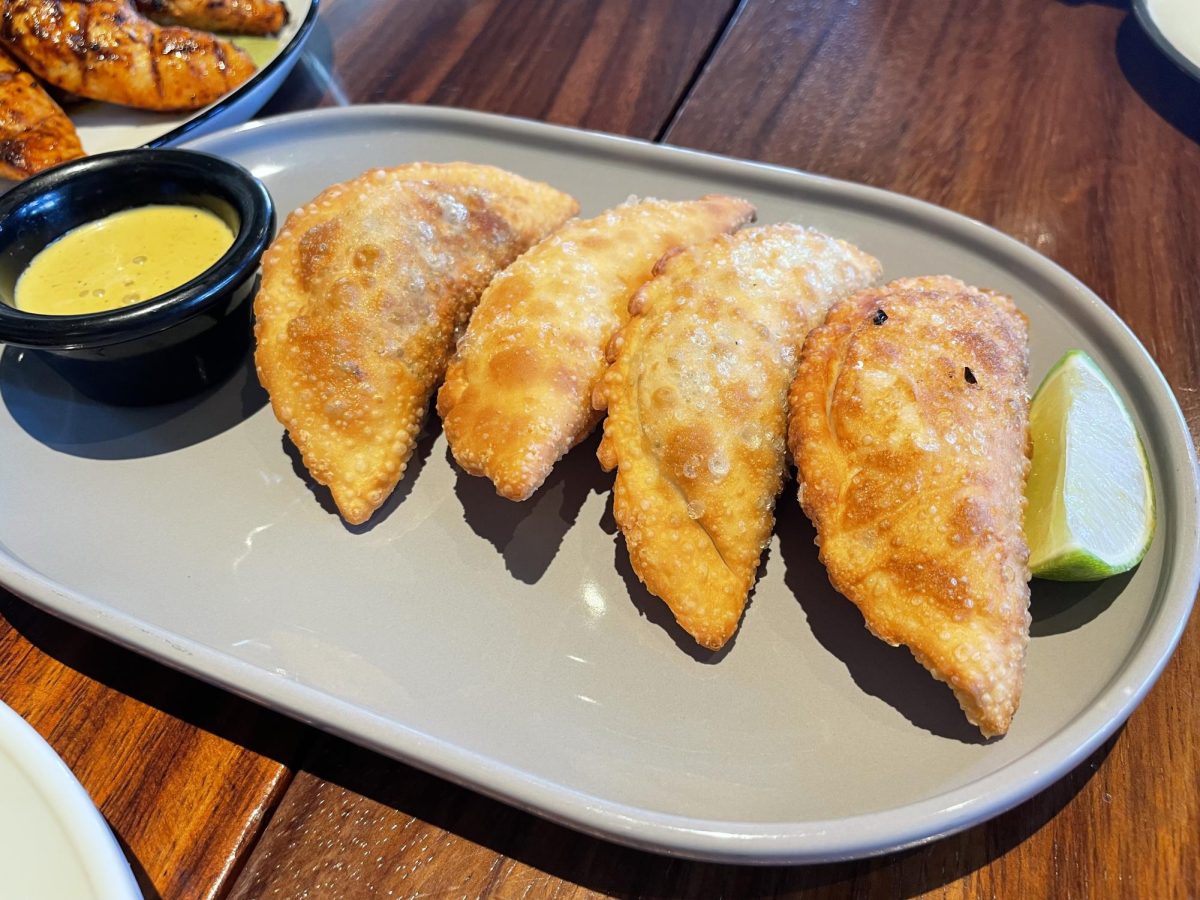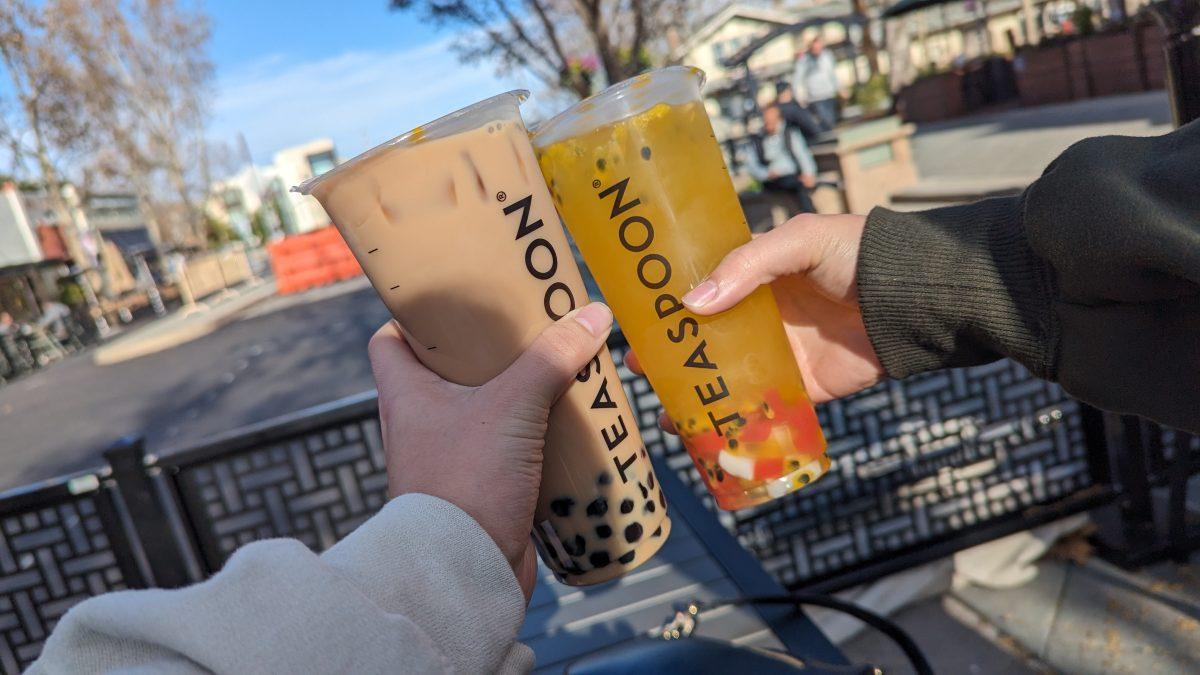Located in the heart of downtown Mountain View, Ramen Izakaya Yu-gen’s reliable favorites and friendly service make it a popular destination for everyone, from high school students to tech workers on their lunch breaks. The wooden design elements, noren (traditional Japanese curtains) that separate each table, and dim lighting add to the cozy interior, creating an inviting ambience. We decided to order four dishes to share and rate; we started with the gyoza as our appetizer and then ordered the tonkotsu ramen, tori paitan ramen, and tonkatsu curry. Overall, we enjoyed the opportunity to personalize each dish, as we chose the spice level and were able to add the condiments found at our table.
Gyoza (7/10)
We started off with gyoza, a Japanese rendition of jiaozi (a common Chinese dish). The crisp golden brown bottom, delicate skin, and flavorful pork filling of this dumpling make for a delicious bite. Gyoza tends to have a thin skin and rich garlic flavor, which distinguishes it from its Chinese counterpart.
Unfortunately, this particular gyoza didn’t quite meet our expectations. Although we enjoyed the dumpling’s savory pork filling, there was not nearly enough of it. The outer wrapping also lacked the crunch typically necessary for a good pan-fried dumpling.
Tonkotsu Ramen (8.7/10)
The first entrée we tried was the tonkotsu ramen—a popular noodle soup with chewy noodles, tender pork, and a soft-boiled egg in pork bone broth. Tonkotsu ramen originated in southern Japan and was actually the result of an accident. A restaurant owner left his soup boiling for too long, which emulsified the fats and collagens, giving the broth a milky color. Not wanting to let the food go to waste, he seasoned it and found that it was richer and had more umami—a word that roughly translates to the “essence of deliciousness” and often refers to the savory flavor of meat broths and fermented foods.
As advertised, the tonkotsu broth was rich, creamy, and full of flavor. Bouncy noodles and marbled pork made each bite decadent and savory. The bean sprouts and scallions added a nice textural contrast, and the soft-boiled egg on top was a great addition, with a creamy, bright orange center and just a hint of sweetness that complemented the salty broth. Our only critique was that the dish could have used more meat to supplement the volume of noodles.
Tori Paitan Ramen (7.6/10)
The second soup we tried was the chicken paitan ramen. Similar to the tonkotsu ramen, it has a creamy broth and milky color. It was served with thin noodles, slices of chicken breast, a soft-boiled egg, bean sprouts, and scallions.
This soup provided a lighter alternative to its traditional pork counterpart. We found this dish’s flavor profile to be very one-dimensional: it was just chicken. The meat itself, however, was juicy and tender. We enjoyed the assortment of garnishes but felt that the thinner noodles lacked the chewiness of the noodles from the tonkotsu ramen.
Tonkatsu Curry (7.8/10)
The last dish we tried was the tonkatsu curry. Tonkatsu was developed during Japan’s Meiji era, and was a Japanese adaptation of European cutlets. In this dish, it is paired with Japanese curry—a sweeter version of Indian curry made by simmering curry powder, flour, oil, and other flavorings. Curry is common in many Japanese households, often in the form of an instant curry roux.
This Japanese staple was rich, savory, and satisfying. The highlight of the dish was definitely the thick, flavorful curry sauce, which paired nicely with the rice and crispy pork cutlet. The meat itself was underwhelming—it lacked tenderness, and the breading was falling off in some places. The dish was served with a basic arugula salad, which provided a fresh contrast to the meat and rice, but seemed a little out of place.










































































